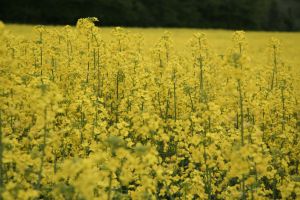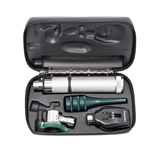After heavy and consistent rains this autumn and winter creating lush plant growth across most of Victoria, grasses will soon begin to flower, which is bad news for people with allergies and asthma.
Royal Melbourne Hospital and University of Melbourne allergy specialist, Professor Jo Douglass, said one in six Australians will suffer from hay fever this spring at a cost of $7.8 billion to the Australian economy.
"While spring heralds the beginning of warmer weather and more outdoor activities, for many people it foreshadows the start of hay fever season, when airborne pollens from grasses are at their peak," Professor Douglass said.
"The symptoms of hay fever can be as basic as sneezing, watery eyes, a runny or stuffy nose, itchy ears and nose and throat. But in some cases, the symptoms can be so severe that a person can’t sleep or concentrate, and may feel tired or unwell."
To assess the level of pollen circulating, staff at the University of Melbourne’s School of Botany work with the Asthma Foundation of Victoria to count the grass pollen in the air and produce a forecast of the next day’s grass pollen level during Melbourne’s peak allergy period, 1 October to 31 December.
Associate Professor Ed Newbigin from the School of Botany at the University of Melbourne and director of the service said the pollen count service has been running for more than 20 years and is the only one of its kind in Victoria.
"To create the forecast, staff take daily pollen measurements and combine them with the weather forecast," Associate Professor Newbigin said.
"Knowing each day’s grass pollen count can help ease suffering by warning people with grass pollen allergies to take precautions on days with high pollen count."
"To collect pollen, air is sampled with a Burkard volumetric air sampler. The machine collects the pollen grains (and other particles from the air) on a microscope slide coated with special glue which remains sticky on hot days and when it’s raining. The slide is removed from the sampler daily and stained so the pollen grains can be counted when viewed with a microscope.
"The count and forecast are supplied to users of the service at the same time each day. The count is given as a qualitative assessment, on a scale from low to extremely high, and as actual values of the number of grass pollen grains per cubic meter of air and the total number of all pollen types."
Professor Douglass added that avoiding hay fever triggers was often the best way to reduce the frequency of hay fever attacks, but it was not always easy to do with grass pollens.
"If, however your symptoms require medical treatment, it is best to see your doctor or pharmacist who may recommend a number of treatments including anti-histamines, corticosteroid nasal sprays or eye drops," Professor Douglass said.
"For patients who are uncontrolled with these treatments, allergen immunotherapy, sometimes called desensitisation, is an effective treatment option."







-160x160-state_article-rel-cat.png)
